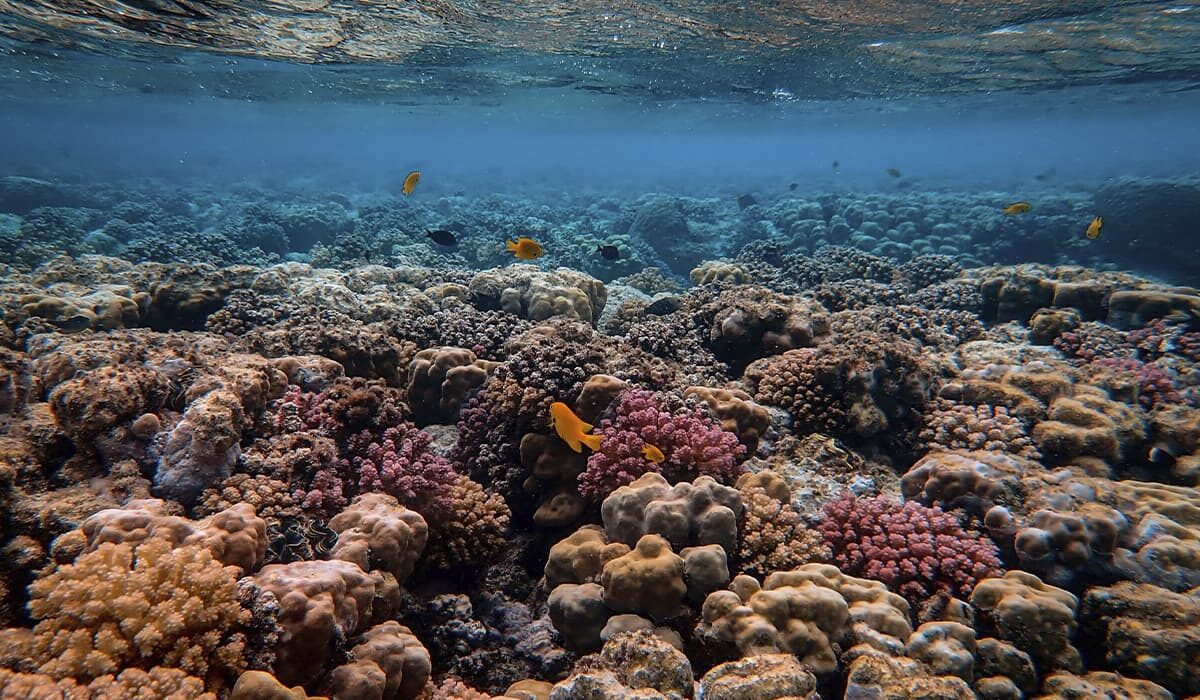The Great Barrier Reef is the largest coral reef in the world. It is located off the northeast coast of Australia, stretching nearly 2,300 km along the mainland shoal. The reef is 2 km wide at the northern end and about 150 km wide at the southern end. This underwater work of art is one of Australia’s most famous and colorful attractions, attracting tourists from all over the world every year.
The structure of the Great Barrier Reef is made up of billions of tiny organisms known as coral polyps. It is the only result of organisms on earth that can be seen from space! The largest coral ecosystem on our planet has over 2,900 individual coral reefs and 900 islands in the Coral Sea. The reef covers 348,698 km² (compared to 244,820 km² for Great Britain). A record number of informative nature films have been made about this huge marine park.
Tourists
The National Trust has named the Great Barrier Reef as Queensland’s calling card. Tourism is an important part of the region’s economic activity, generating more than $3 billion annually.
Hotels and infrastructure have been built on the larger islands. These places – the embodiment of the idea of “heaven on earth”: a unique nature, excellent climate, amazingly comfortable water and air temperature, white sandy beaches, comfortable hotels and friendly service staff. This is the perfect place for lovers of active recreation. You can, for example, rent snorkeling equipment and take advantage of diving instructors. Excellent pastime will be boat trips on yachts and catamarans, fishing and all kinds of water sports. There’s also plenty to do on land, including miniature golf, go-karting, exotic Australian wildlife viewing, horse and bike rides. Hamilton Island even has an airport. The small island of Bedarra will appeal to those who want to relax in silence and hide from prying eyes. No more than 32 people can stay here at a time, because there are only 16 villas. You can also stay at the resorts of Dunk, Brampton, Hatzman, Keppel, Haimam, Heron, Magnetic, Orpheus, and Green. But there are islands on the Great Barrier Reef where no man has ever set foot.
Great Barrier Reef Ecosystem
It is almost impossible to describe the richness of the underwater world found on the Great Barrier Reef!
The species diversity is astounding! More than 1500 species of fish, 4000 mollusks, over 200 species of birds… find a home in the marine park.
Reef community includes coelenterates (polyps, jellyfish), many species of mollusks (gastropods, bivalves, cephalopods, etc.), sea turtles, snakes, worms, echinoderms (sea urchins, stars, snake-tails), bottom and free-floating fish, and marine mammals (dolphins, dugongs).
All this whirlpool of life exists under the strict laws of nature and natural selection, where everyone can be both predator and prey.
Sharks are also of genuine interest. The Great Barrier Reef is home to a wide variety of marine predators that are the “coral garden’s caretakers”. On the bottom, squatinoids, carpet sharks, multitooth sharks, collar sharks and other species of bottom sharks prey. Here you can see nurse sharks, leopard sharks, feline sharks, spiny representatives of these cartilaginous fish. In the water column, among coral thickets, there are numerous reef sharks, catching and eating small reef animals and fish. There are large sharks – sand, hammerhead, lemon, and even white. Divers, swimmers and surfers should be especially careful in these areas.
There is also the famous whale shark! It’s listed in the Guinness Book of World Records as the biggest fish on the planet. But you should not be afraid of it: the “sea monster” feeds only on plankton. Dolphins and killer whales constantly hunt near the reef. Their victims are often humpback whales and minke whales. Breeding of humpback whales occurs near the Great Barrier Reef from June to August. On the southern islands of the reef, sea turtles lay their eggs, which are currently threatened with extinction.
All the “tasty” sea creatures – huge octopuses, squids, lobsters, lobsters, also live on the Great Barrier Reef. And lately, there have been truly huge populations of crown-of-thorns starfish. Today, this starfish is the greatest threat to the Great Barrier Reef. In a couple of months, it can destroy large numbers of corals.
Besides sea creatures, the coral islands are home to over 200 species of birds. As for flora, she is very poorly represented. In the area of the reef barely scrape together 40 species of plants that can survive in conditions where even the groundwater is characterized by high salt content. But this drawback is more than off-set by the unique aquatic fauna.

